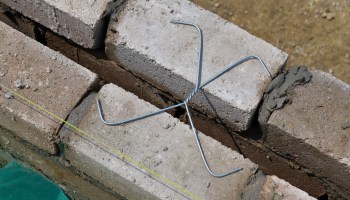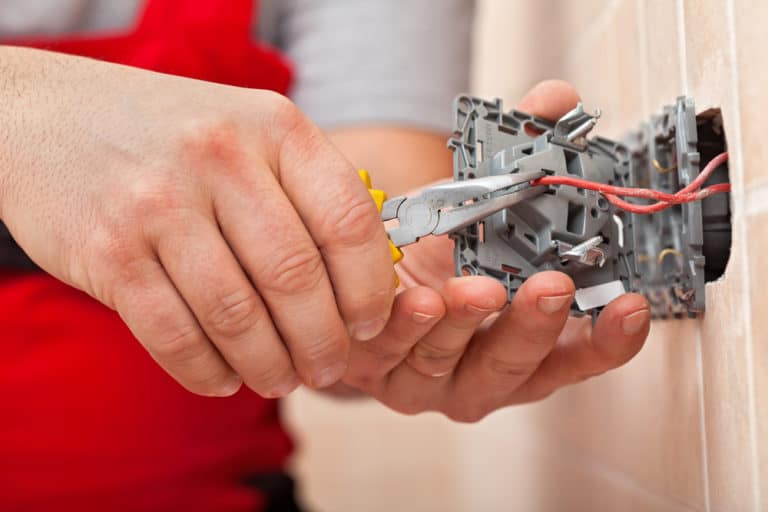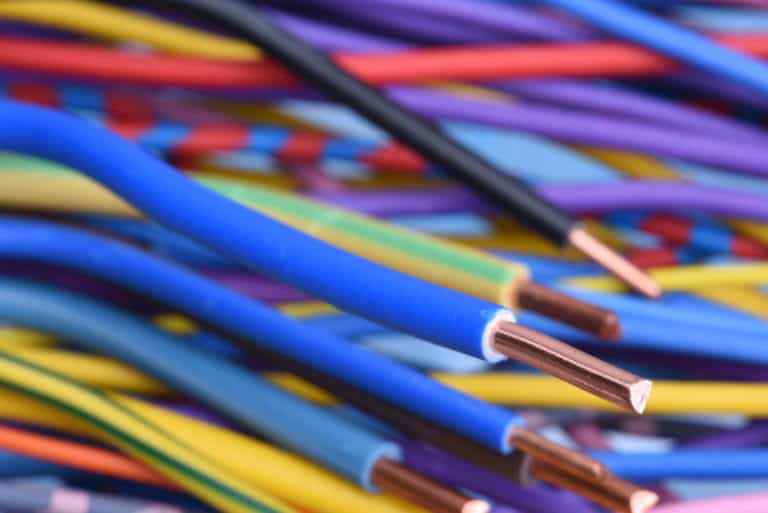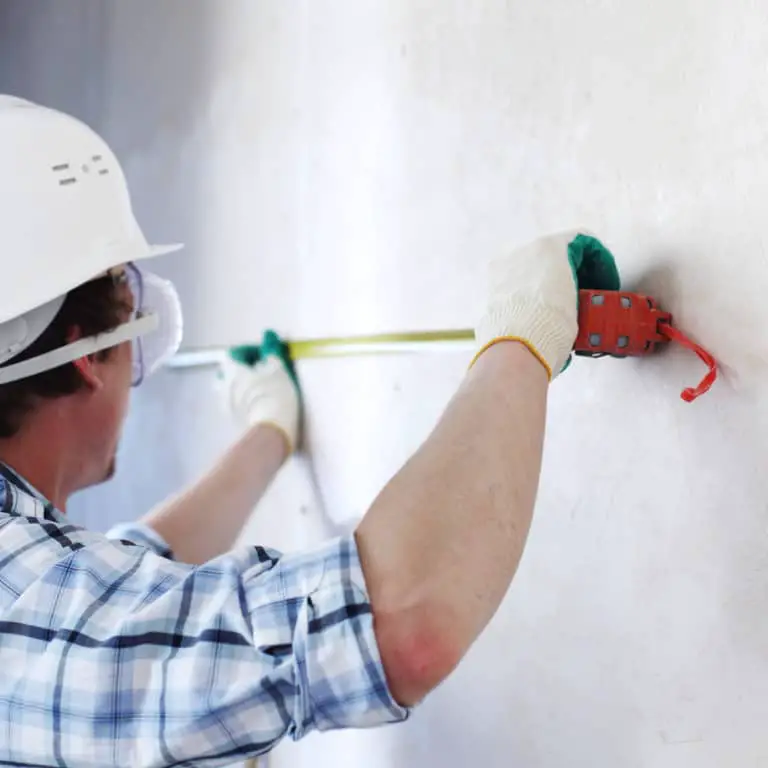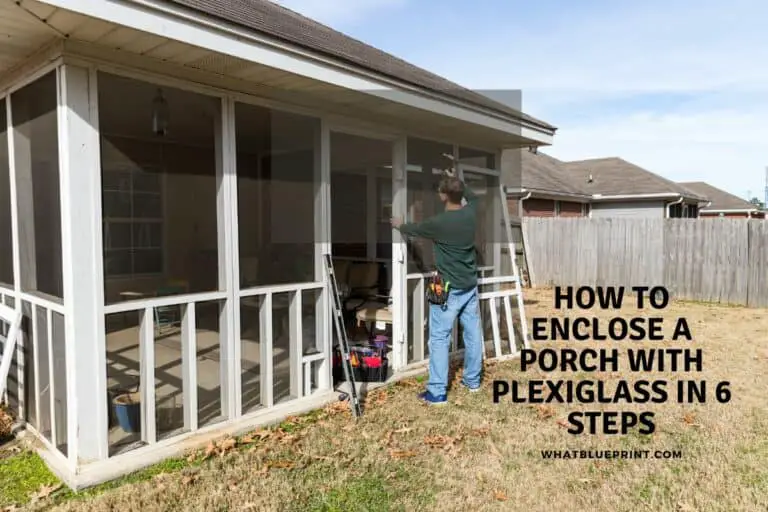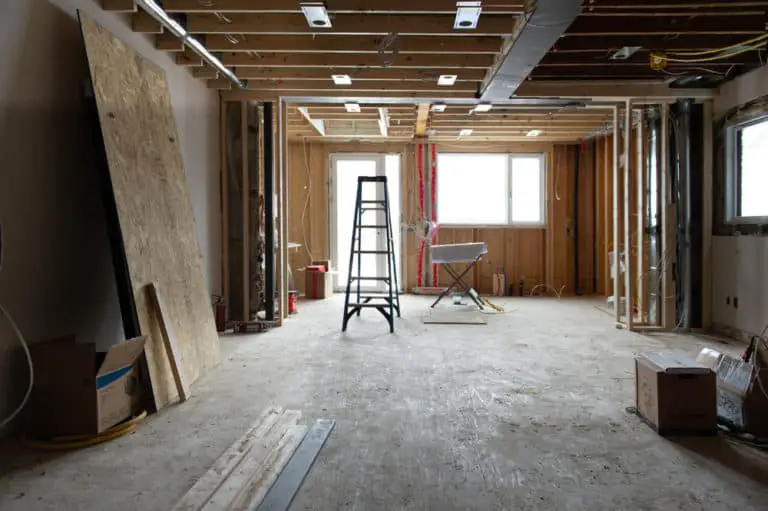Can You Run Cables In Cavity Walls?
In the modern era, cables are used now more than ever. Nearly every piece of technology needs a cable. From the TV that uses the internet to smart cooking appliances have a built-in computer. Any technology that involves the transfer of signals uses cables.
Cavity walls are a common type of wall and considering that most houses were built before the technological boom, is it possible to run cables through these walls to adjust to the technology of today?
You can run cables through cavity walls, as long as the cavity wall is not compromised or too filled with insulation, which leaves no space for new wiring/cables. The important things to consider are the environment inside your cavity wall, the space inside your cavity wall, and the type of cables you want to run through the wall.
Let’s examine in more detail all you need to know about cables, cavity walls, and important information regarding the electrical system that homeowners should know.
What you should know about cables
Cables are used to transmit signals. Ever wonder how a USB charger can be able to access your phone’s memory the moment it gets attached to a computer? The cable for your charger is capable of conveying that information between your phone and the computer because of how cables are designed.
Cable installation is important, especially for areas that are heavy in technology. Whether it be for a new wifi router in the living room or a brand new smart TV in the bedroom, cable installation is an additional expense that you should take into account.
What are cavity walls?
Cavity walls are walls with a hollow center. Most cavity walls are usually made up of masonry units like bricks or concrete.
Cavity walls are extremely sturdy, difficult to break, and offer great protection; however, this comes at the cost of making installation a bit trickier compared to other walls such as drywall.
A major concern if you have a cavity wall and you wish to install cables within them would be moisture. This is especially true for exterior cavity walls, outer walls that get hit by the weather since those will be the ones most exposed to the elements.
How are cables protected inside a wall?
Architects and electricians have ways to protect cables and wires within walls but, at the same time, still making them easy to access.
There are certain parts of a wall that are safer than others. For example, the top of the wall will always be safer than the bottom of the wall when it comes to cable installation.
The most surefire ways of protecting a cable would be to create a barrier around the set of cables. This barrier will ensure that the cable has enough space while at the same time protects it from anything inside the wall, whether that be pests or the environment.
Are cables and wires the same?
No, cables and wires are not the same, although it’s easy to mistake one for the other due to their similar uses and functions.
- A cable is a group of insulators that can transmit telecommunication signals, electricity, and power.
- Your phone charger is a cable.
- Your Ethernet plug is a cable.
- A wire is an insulator that can transmit electricity.
- Wires can be found in any electrical device.
You might be wondering why don’t we just always use cables instead of using wires, since they can both transmit electricity. This can’t work because a wire works better for transmitting electricity while a cable is better for transmitting signals.
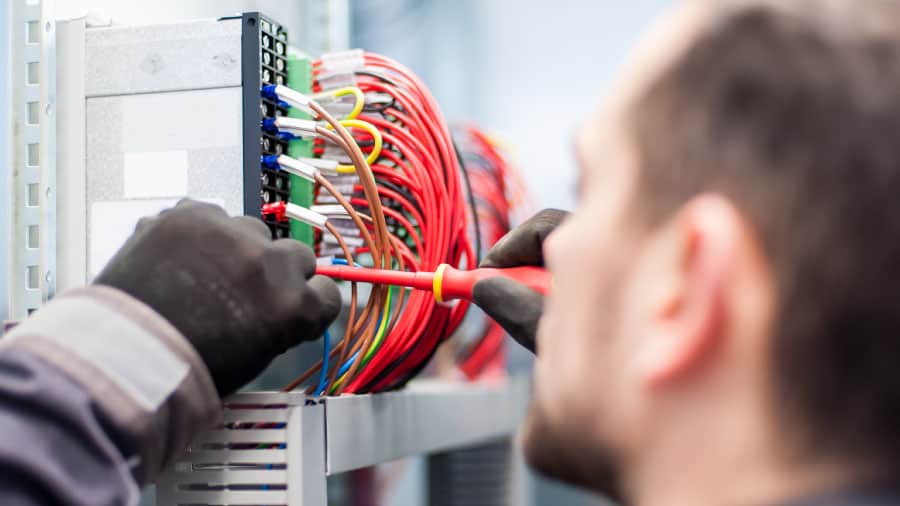
Cable installation tips
If you plan on installing cables for a new TV or a new computer, read on. Below is a brief guideline on safety tips and things to consider when installing a new cable into your house.
- Cut cables to the required length.
- Ensure that the cable is in the least amount of tension stress possible while having a little bit to avoid the cable from moving too much.
- Follow the cable. Cables are cured in such a way that they naturally go to one direction and resist bending in the other.
- Give the cables room to move, most likely there will always be a bit of movement either caused by the movement of other cables or by people. Giving the cables room to move helps avoid friction and abrasion.
- Ensure that your cables are neat and not tangled up. Messy cables are a guaranteed shorter lifespan.
Note: If you’re unsure or not confident in installing a cable yourself, hire an electrician instead. The spending to hire an electrician will save you headaches and future costs due to poor self-installation.
As a homeowner, what should you know about your electrical system?
Electrical systems, just like plumbing systems, foresee any problems that may arise and has measures that prevent any electrical damages from worsening.
The basic concept of an electrical system is that it’s a big circuit. A circuit is a system that allows electricity to flow and can either be a series circuit or a parallel circuit. In the case of houses, a parallel circuit is always used.
“A parallel circuit is a circuit that has two or more paths to flow through. Unlike a series circuit, a parallel circuit allows multiple objects to enjoy the same amount of power, and if a wire/cable of the circuit gets grounded, the rest of the circuit can still function.”
In my opinion, you should learn about the breakers in the main panel. Which breaker turns off which circuit should be REQUIRED for homeowners to learn about.
- Main Panel
- Contains main breaker switch
- Contains multiple breakers
- Receives electricity from the powerlines, usually above the house.
The consequences of a broken pipe are extra spending and flooding, while the consequences for a faulty wire could lead to FIRES.
Most homes are fully equipped with fire-retardant and fire-resistant measures. However, the best-case scenario is that fires should never occur in the first place.
What happens if a cable gets damaged?
Cable damage is a serious problem with multiple causes and effects.
A damaged cable is any cable that has been compromised, whether it be its rubber insulation, position, or being completely detached from the circuit. If not turned off, electricity will still run through a damaged cable, which can be a cause for fires or injuries.
Luckily, circuit breakers are an automated system that can detect if electricity is going somewhere it’s not supposed to be going to. Aside from that, the circuit breaker prevents the circuit from overload and from shorting.
Check if your circuit breaker at home has this automated feature; it’s a good investment to protect your house from fires and to reduce problems from happening.
Why do power outages occur?
As mentioned earlier, circuit breakers are utilized in houses to prevent damage from happening to the wires/cables. The same concept can be applied on a bigger scale. During inclement weather, power lines are prone to be damaged by the rain, wind, or debris (such as trees or branches).
If electricity were to continue flowing and the system fails, the wire/cable would be so severely damaged that the electric company would have to repair it. This could cause the entire electrical grid to either short or overload.
If the electricity were to be stopped, it would prevent any further damage to the entire system. Once the electricity provider sees that there is no longer any serious interference with the system, the power can once again be turned on again.
Conclusion
Homeowners should know more about their houses if they want to save money, avoid headaches, and get the most bang for their buck. Cables are essential in today’s world as they allow us to connect.
As a homeowner, you should be familiar with cables and your main circuit board in case you need to access it in the future.

